| itinerary < 21 August Sylvan Lake, Black Hills 23 August to Platte, South Dakota > | Black Hills of South Dakota 22 August 2014 |
|
From our room in the Sylvan Lake Lodge, we look out through pines to the tops of the hills, the tallest in the Black Hills and therefore the state. These are ancient volcanic mountains worn down to the nubs of their lava chambers and crystallized into granite. Their softer parts have been eroded away, leaving fancifully shaped chimneys and pillars, through which winding highways have been cut. Our day began on the Needles Highway, which passes through several narrow (eight foot wide) tunnels (one is circled at right). Nobody hurries on these roads. |
 |
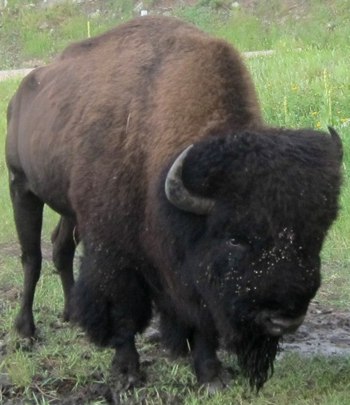 |
The Needles Highway passes among these granite monoliths at the top of a long ridge, then winds down to the edge of the forest, where the high prairie begins.
|
|
As you can see (right) the Bison are part of the habitat, scattered in among the forest. About the apparent drunkenness of the photo at right above: those monoliths are not straight, and the Limber Pines follow the wind. The tree at right is telling the truth. I have not written about Yellowstone yet, partly because our passage through that huge, overcrowded, under-featured park was so unpleasant. The delight here in the Black Hills, where there are two National Parks (you'll see) and the enormous Custer State Park, is that there are many more sights, static as well as ambulatory, and the people who have come to see them do so at a more leisurely, considerate pace. Nor are the animals in a hurry. A little later, just inside WInd Cave National Park, a young bull Bison sauntered up to our car and licked the rear view mirror. |
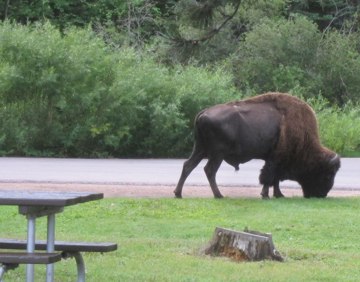 |
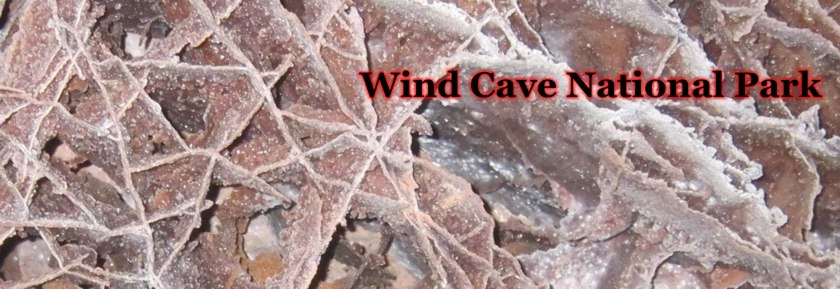 |
 |
Eventually, after winding across broad prairies, getting licked by Bison, barked at by Prairie Dogs, and watching a small herd of Pronghorn Antelope unhurriedly munching, we arrived at the Black Hills' crown jewel, Wind Cave. Our timing was perfect, and very soon we were plunged 200 feet down into the earth with 38 other folks (mostly from Wisconsin) and our Ranger Maribeth (from Ohio. Maribeth is pictured turned away from the camera because we were warned not to blind her with our flashes.) |
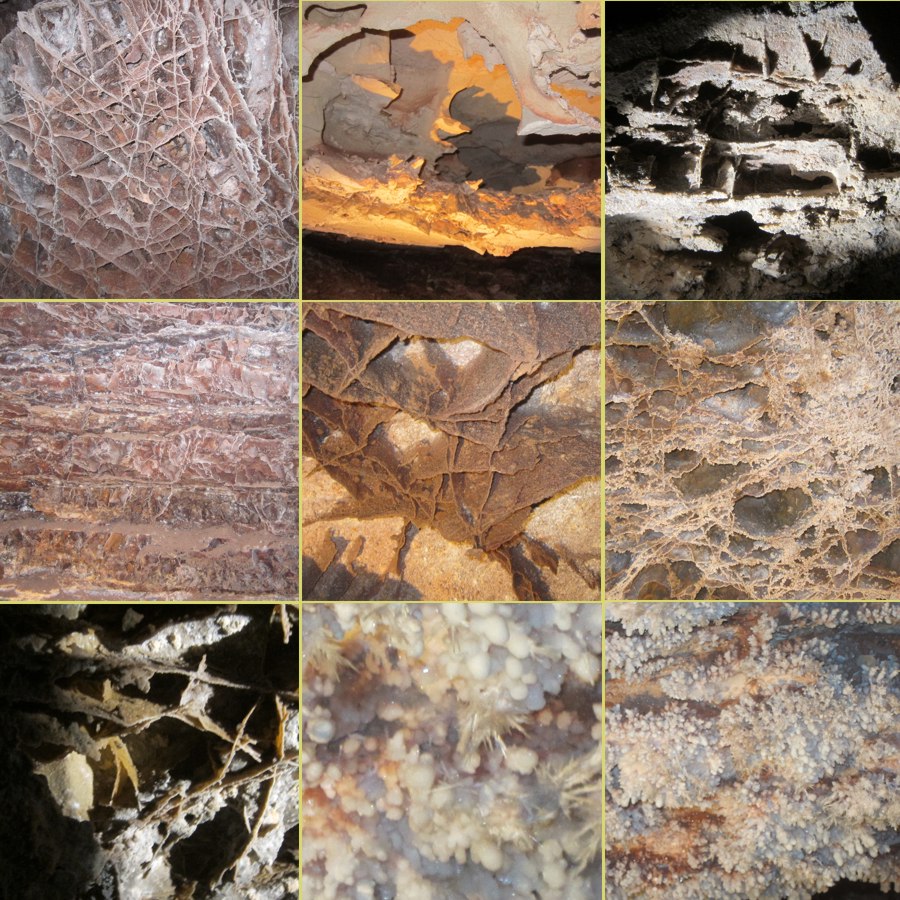 |
|
Unlike most caves, Wind Cave has neither stalagmites nor stalagtytes. It was an underground lake formed some 30 to 50 million years ago, giving plenty of time for the carbolic acid to eat its way through the fractured limestone, redepositing a harder rock, calcite, in the cracks and fissures. Then, as the water receded, the limestone was washed away, leaving the calcite as boxwork, a rare and beautiful cave formation. All of the photos above feature boxwork in its many guises and colors, except the last two, which show the more familiar popcorn and frostwork. Wind Cave is considered the sixth largest cave in the world, with 140 miles of passages mapped at the time of our visit, and rising. Barometric studies -- comparing the amount of wind moving in and out of the cave in the context of the change in barometric pressure -- suggest that about 10% of the volume of the cave has been mapped. |
|
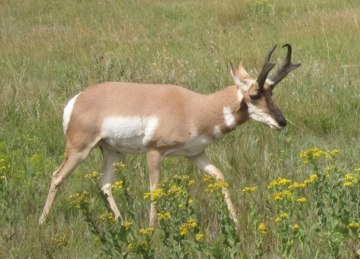 |
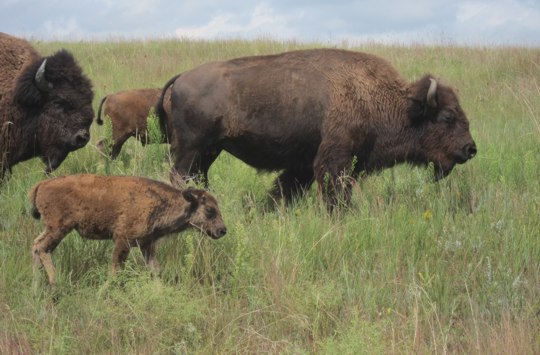 |
The Main Event here is still the Bison. We had to stop for them (and be sampled; not edible) and later wend our way through other cars stopped and gawking. Then I had to wait while the Pronghorn buck (above) crossed th road (disdainfully.) And here, a large family group was quietly grazing beside the road, oblivious to us snapping their pictures. Famously belligerent (as they should be; their meat is delicious) it is such a gift to be surrounded by their massive, ruminative intelligence: the wisdom of the ancient prairie. We come away from the Black Hills with a new understanding and appreciation for Prairie. |
|
One motivator for this trip was the presence on Rochelle's Bucket List of Mount Rushmore ... and here she is, standing in the archway leading to the viewing deck, with the Four Presidents in the background. Here they are now, closer up:
|
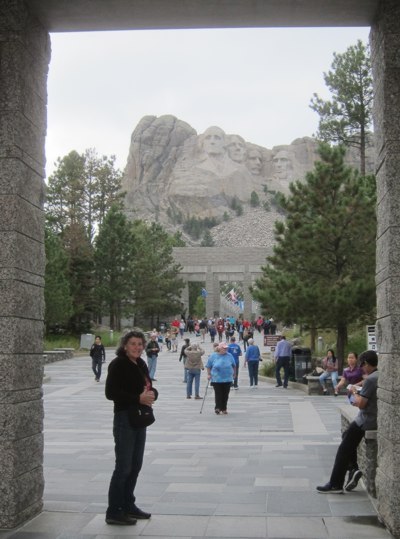 |
 |
updated 18 November 2024 Caspar Time site software and photographs by the Caspar Institute except as noted this site generated with 100% recycled electrons! send website feedback to the CI webster © copyright 2002-2024 Caspar Institute |